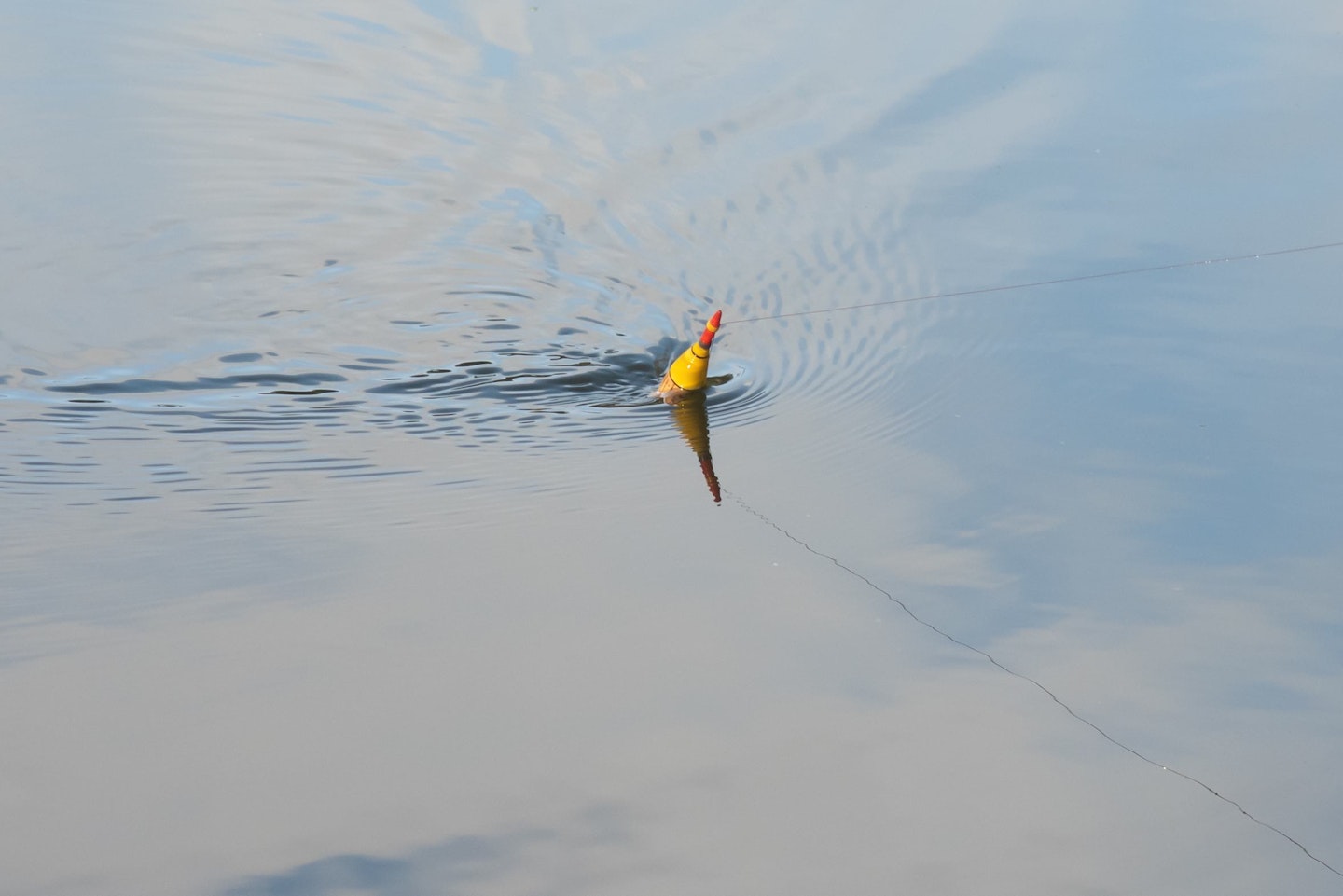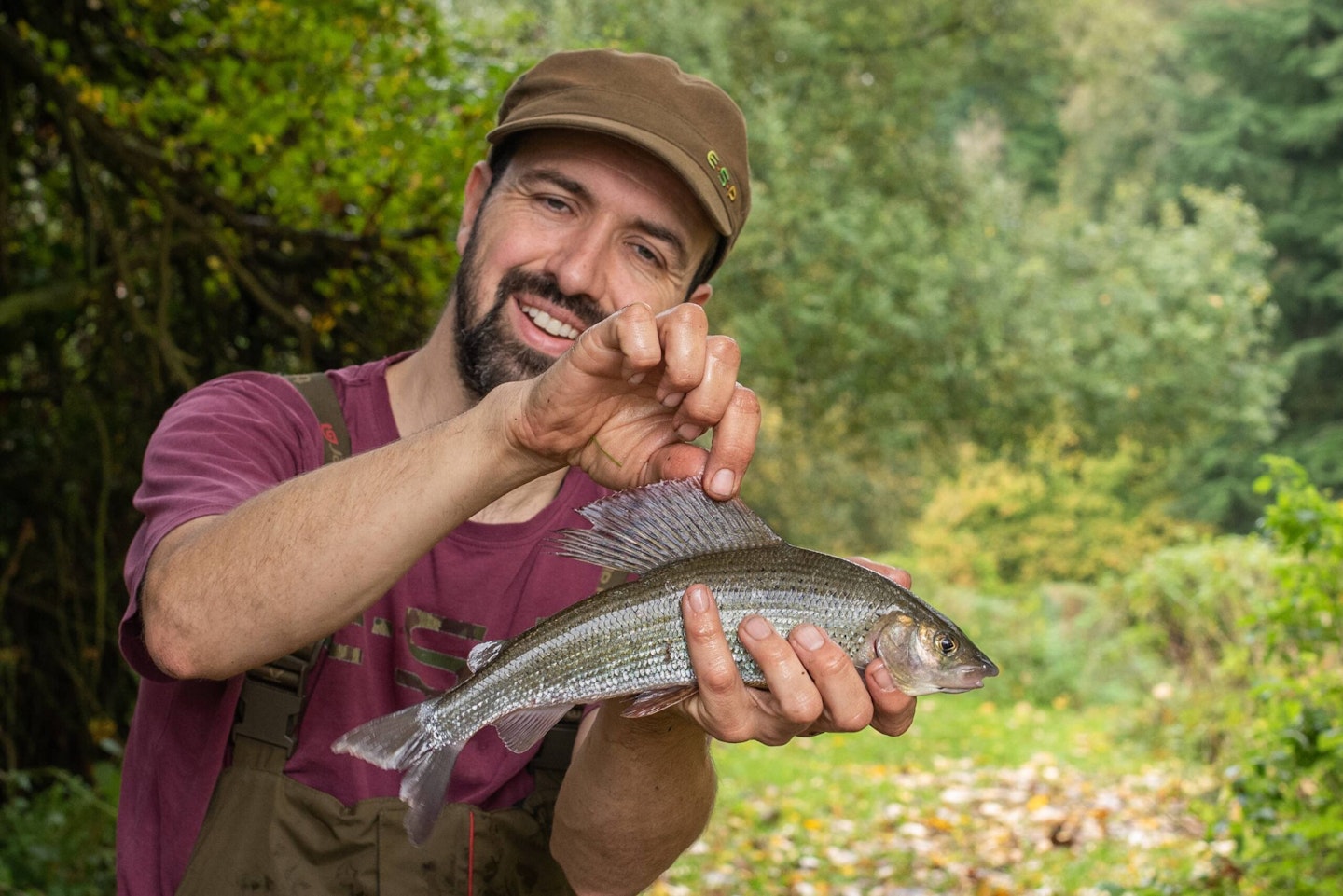There's something entrancing about spending time by running waters. While there is serenity
to be found in the stillness of many beautiful lakes and ponds, these days, as winter firmly takes hold, I’m called away from the crucians, tench and carp that I pursue in the summer months by a siren who occupies more turbulent waters – the lady of the stream: the grayling.
Salmon can spawn anytime from October to February, depending on the conditions, and their eggs, along with insects and crustaceans, are part of a grayling’s natural food source. So, a bait that looks just like these salmon ova, that’s available in most supermarkets, would be worth knowing about, right?
WANT TO CATCH A GRAYLING? THESE VENUES ARE EXCELLENT FOR CATCHING THE LADY OF THE STREAM.

Enticing the ladies
Pomegranate seeds are a traditional grayling bait and are very effective owing to their aesthetic similarity to salmon roe, and yet, they don’t seem to be used too widely. They have become my go-to bait for grayling, though I’d also never be without maggots because they’re essential for drawing fish into your swim and building feeding confidence as free offerings.
They’re both killer hookbaits as far as the ladies are concerned. I usually start a session with maggots both as loosefeed and on the hook, and then switch my hookbait to pomegranate seeds to pick out the better fish once I’ve broken my duck. Pomegranate seeds can simply be hooked through the side of the skin, leaving the point exposed.
NEVER CAUGHT A GRAYLING? THESE EXCELLENT TIPS WILL HAVE YOU CATCHING THEM WITH EASE.

Learn to pick and choose
Effective as they are, using maggots on the hook can result in the capture of fish other than your quarry and if you have a specific quarry in mind, the novelty of catching other species wears thin.
It’s true that there are other highly attractive baits that will tempt a grayling to submerge your float, such as worms (where they are permitted) or sweetcorn. However, in my experience these are just as likely to be taken by a trout, which can give an exhilarating scrap but can destroy a swim, so when grayling are your target, you want to try to be a bit selective about what you hook.
It’s my experience that pomegranate seeds serve this purpose well – I don’t think I have ever caught anything other than grayling with a pomegranate seed on my hook!
NEED HELP WITH YOU RIVER FISHING? THIS GUIDE WILL HELP YOU CATCH MORE FISH!

Strutting to success
Of course, the right presentation is critical. Firstly, most grayling, certainly the larger fish, feed just off the bottom and are less likely to rise for a slow-sinking bait on the drop, so you will need to use a large bulk of shot, or an olivette, to get the bait down quickly.
Be sure to use a float which is buoyant enough to carry the weight required to beat the strength of the current. Any chubber/ loafer float is perfect but, in my opinion, you just can’t beat a traditional, hand-crafted cork grayling bobber.
It’s important that the bait travels ahead of the float rather than being dragged along by it, as the latter will appear quite unnatural to the fish.
USING ONE OF THE BEST FLOAT RODS WILL MAKE TROTTING A FLOAT FOR GRAYLING EVEN MORE ENJOYABLE.

Cast for the dream
Centrepins are the ideal tool for trotting. It can be done with a fixed spool and closed- faced reels lend themselves well to the task, but the simplicity of letting the current turn the spool, along with the direct connection with a hooked fish, make centrepins beautifully intuitive to use. The only setback for some, is casting.
If you choose to use a fixed spool reel, a side cast is generally best to prevent the rig tangling, especially with the heavy bulk shot/olivette that will cause problems with an overhead cast.
WHETHER YOU LIKE TO USE A CENTREPIN OR FIXED SPOOL REEL, OUR BUYERS GUIDE CONTAINS SOME OF THE BEST FISHING REELS.

TOP TIP
Don’t let freezing conditions put you off from heading out to target grayling. Unlike many other species, they are unconcerned by icy water and will continue to happily feed through the most challenging stage of the year. Search several swims to find your quarry and once you do stumble on a shoal, bites should come reasonably quickly if you’re able to present a meal in front of them in a manner that proves enticing.
